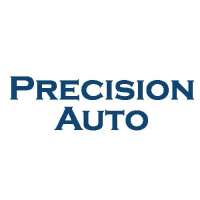4
12.4.1 Wide fluctuations ....................................... 17
12.4.1.1 Check water inlet valve ........................... 18
12.4.1 2 Sudden slugs of water ............................. 18
12.4.1.3 Water flows ............................................. 18
12.5 Pumps ............................................................ 18
12.5.1 Cavitation ................................................... 18
12.5.2 Misaligned coupling ................................... 19
12.5.3 Pipe alignment ........................................... 19
12.5.4 Vibration..................................................... 19
12.6 Overflow ........................................................ 19
12.7 Motors ........................................................... 19
12.7.1 Tripped starter overload ............................ 19
12.7.2 Improper power supply ............................. 19
12.7.3 Incorrect connections .............................................. 19
12.7.4 Mechanical failure .................................................... 19
12.7.5 Short circuited windings .......................................... 19
12.7.6 Overload ................................................................... 19
12.7.7 One phase open in three phase circuit .................... 19
12.7.8 Vibration ................................................................... 19
12.8.1 Blown Fuses .............................................................. 20
12.8.1.1 Short circuits ......................................................... 20
12.8.1.2 Incorrect connections ........................................... 20
12.8.1.3 Improper power supply ........................................ 20
12.8.2 Starter overload tripped .......................................... 20
12.8.3 Motor fails to start ................................................... 20
12.8.4 High / low alarm system not operating. ................. 20
1. 0 PRINCIPLES OF DEAERATION
1.1 Corrosion
Corrosion in steam systems is caused mainly by the presence of non-condensable gases,
such as oxygen and carbon dioxide, or by low pH value of the water. Levels of pH can be
raised, but the gases must be removed mechanically from the system.
1.2 Common Gases
1.2.1 Oxygen
Oxygen constitutes 21% of the earth’s atmosphere. Since most water supplies come in
contact with the atmosphere, it is logical therefore, that they contain oxygen. A
solution of oxygen in water is very corrosive to metals (iron, steel, galvanized iron and
brass) widely used in stream systems. The corrosiveness is increased with the presence
of lower values of pH, and higher temperatures. In reality, it is necessary to have
oxygen in combination with water to cause corrosion. Dry steam containing oxygen is
not corrosive. Since stream, however, is eventually returned to its liquid state and is
contaminated with oxygen, this must be removed from the water before steam is
produced.
1.2.2 Carbon Dioxide
Free carbon dioxide is found, like oxygen, in most natural water supplies. Unlike
oxygen, only very small amounts are picked up from the atmosphere. Decaying organic
matter forms most carbon dioxide. The carbon dioxide content of rain water is less than
2 ppm; yet, many water supplies contain between 50 and 300 ppm of free CO
2
. This
difference is due to decaying organic matter present in these supplies.
When free carbon dioxide comes in contact with certain elements or compounds
(limestone, chalk, dolomite, magnesite) a large portion will be converted to

